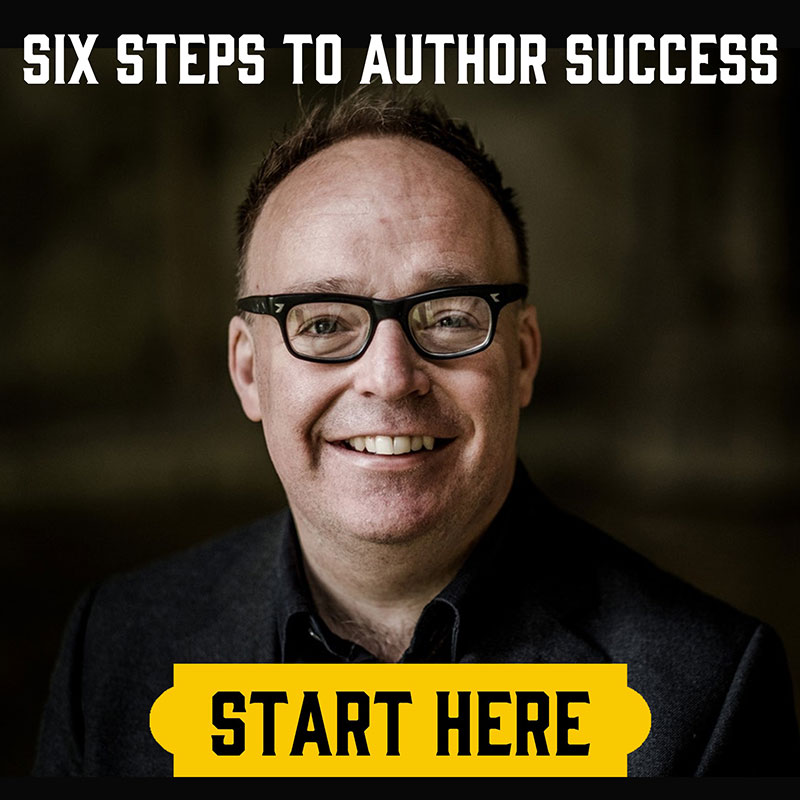How to Tighten Your Writing

Teenagers aren’t typically known for wanting to write a lot of words. As an author, you might regularly pump out thousands for fun now, but was that always the case? Or did you greet an essay just like 99% of other students: “How many words?!” Most of us once fell into the latter camp but were conditioned to equate a higher wordcount with higher quality and, as a result, made a habit of over-writing. It’s only later that we learned the truth: that a bigger number isn’t always better. A clear 50-word email, for instance, is preferable to a convoluted 300-word one, and a 250-page novel can deliver a more enjoyable experience than one that’s 700 pages.
However, shorter doesn’t always mean better, either. Hence, the struggle. It’s difficult to identify the good words from the bad and strike a balance. In many ways, what you cut must depend on your process, a project’s purpose and its unique needs. Both under-writers and over-writers exist in the world. Stephen King is a self-proclaimed over-writer. In his book On Writing, he explains that he removes about 20% of his words after the first draft. Meanwhile, Wool author Hugh Howey claims on his blog that he writes lean drafts then adds roughly 20% — a direct mirror image of King. Yet, it’s almost certain that both cut something as they edit.
Regardless of whether your overall wordcount goes up or down between drafts, you’ll need to apply both approaches, too. Sure, your book might end up 20% shorter overall but that could happen by cutting 30% and adding 10% during the same pass. Either way, your aim shouldn’t be to cut or add. It should be tighten.To fill logic gaps and say everything you need but in a way that doesn’t include fluff. It’s just that tightening often means removing. Mastering this skill is tough. Read on, however, and today you’ll learn to identify common literary features many new authors include, the omission of which can dramatically improve a manuscript.
Adverbs
“Beware adverbs,” I call over my shoulder hastily, jogging quickly for the bus.
Even if you’ve never edited fiction, your instincts should tell you that sentence is a jarring one. Why? The adverbs — they’re considered a classic mistake for a reason. Not all adverbs are bad. It’s just that amateur writers tend to overuse them to the point where you can take out over half. Consider this alternative:
“Beware adverbs,” I call over my shoulder, jogging for the bus.
Remove the adverbs and the sentence retains its meaning but becomes snappier, don’t you agree? Stephen King does when he describes adverbs in his guide On Writing:
“They’re like dandelions. If you have one on your lawn, it looks pretty and unique. If you fail to root it out, however, you find five the next day . . . fifty the day after that . . . and then, my brothers and sisters, your lawn is totally, completely, and profligately covered with dandelions.”
Often, the remedy for overusing adverbs is self-explanatory: use them less. The tricky part is working out how to remove some without losing meaning. One way is to replace a weak verb with a stronger one. Instead of having barbarians run “roughly” at their enemies, for example, you could have them “bulldoze” their enemies. Clearer context also helps you show rather than tell what’s happening. Rather than having a character order their captives to get on the floor “furiously,” perhaps have them bunch their fists as they do it. As humans, we use social queues to communicate emotion every day. Therefore, you should have no problem describing them.
Info Dumps
Have you read a book that contains a character that loves their own voice? These sorts follow around the protagonist like a walking encyclopaedia and seem to know everything — from the history of their village to the habits of mysterious animals — and delight in explaining everything unprompted. The hero, meanwhile, knows little despite living in the same community all their life. It’s obvious when you notice these supporting characters that they don’t exist to help the hero. They’re for readers. And when context doesn’t support their existence in a story, an omniscient narrator often takes up the mantle. But info dumps aren’t necessary in either case.
In fact, it’s best to remove dense info dumps from your work where possible because they slow the action. That’s not to say you shouldn’t include backstory or world building. It’s just that exposition tastes better when it’s sprinkled as a seasoning, not cut into chunks. After all, its rare to encounter info dumps in real life. Ordinary people don’t explain their scars when they meet strangers. Nor do they outline how their government works. When prompted, they say they got their scar in a “fight” or that the government are “in it for themselves.” Omitting details might leave your readers wanting more, but that’s a good problem to have as an author.
Dialogue Tags
Imagine you’re locked in a room with friends when the lights go out. What happens? At first, everyone panics and talks over one another. It’s hard to distinguish who’s speaking. Now imagine a disembodied voice starts identifying each person as they speak. Helpful, right? True at first, but it’ll soon become annoying once everyone learns to recognise each other’s speech patterns and the voice doesn’t stop. The irritation is predictable. Yet many new authors essentially become the disembodied voice in their books, adding endless dialogue tags:
“Are these what I think they are?” Mike demanded angrily.
I glanced at the familiar paperwork.
“Divorce papers,” I said to him. “Have you been reading my post again?” I asked.
At that moment, Susie entered the room and hesitated.
“Mum?” she sneaked. “What’s going on?”
I frowned. “Nothing,” I said.
Sometimes, dialogue tags are necessary when it’s unclear who’s speaking. When characters are clearly defined, though, they actually harm the flow of a scene. That’s why dialogue is more impactful without so many, like so:
“Are these what I think they are?” Mike demanded.
I glanced at the familiar paperwork.
“Divorce papers, Mike. Have you been reading my post again?”
At that moment, Susie entered the room and hesitated.
“Mum?” she sneaked. “What’s going on?”
I frowned. “Nothing.”
Removing the excess tags here doesn’t lose any meaning or clarity. It’s still clear who’s talking and to whom. Plus, the conversation flows more naturally and we get a sense of how each person feels by what they’re saying. The streamlined language simply packs a stronger punch.
Head Hopping
Virginia Woolf was known for head hopping — when an author changes character viewpoint part-way through a scene. In Woolf’s case, she did this by taking full advantage of a third-person omniscient narrator, peeking inside individuals’ heads to read their minds. It’s part of the reason she became popular. Indeed, her style has spawned thousands of copycats. But most authors can’t carry off this stylistic choice, nor should they for various reasons we’ll explore. Consider, for example, the following passage:
Steve closed the door, hoping nobody would overhear the conversation.
“Sit down,” Anya said, relieved he shared her desire for secrecy.
In this scene, we’re in Steve’s head, then Anya’s. We can read both minds. Remove the head hopping, however, and the scene plays out differently from Steve’s sole perspective:
Steve closed the door, hoping nobody would overhear the conversation.
“Sit down,” Anya said, stiff and quiet.
He stayed upright at first. Eventually, though, he complied and her shoulders settled.
Notice the extra tension? The mystery? The way the reader has to look into Anya’s body language with distrust? None of this extra spice exists alongside head hopping because the reader knows Anya doesn’t want trouble. They know everything… and it’s boring. The solution is simple: remove head hopping and tension multiplies.
Beginnings and Ends
New authors tend to over-write at a story level as well as when padding individual sentences. You can usually see when they’ve failed to address this particular issue in their reviews:
“The book’s good but the start is a little slow. Stick with it!”
“It could have done with losing 100 pages.”
“I didn’t like the ending. It sort of trailed off.”
Sometimes this happens because the author spent 50 pages free writing their first draft before discovering their real story. Other times they failed to learn about pacing. Sometimes it’s because they reached a logical conclusion but spent 50 more pages typing up loose ends that could have stayed loose. Either way, they didn’t remove unnecessary scenes and it hurt their story. Remember this: when it comes to fiction, less is more, even if it means leaving ends untied. As Earnest Hemmingway once explained when dissecting his book Out of Season:
“I had omitted the real end of it which was that the old man hanged himself. This was omitted on my new theory that you could omit anything if you knew that you omitted and the omitted part would strengthen the story and make people feel something more than they understood.”
It’s common to worry that the reader won’t fully understand your story if you cut exposition-filled scenes. What you’ll find, though, is that they’ll often create meaning to fill that void — one that’s more profound than anything you would have described. Hence, if you want to master tightening manuscripts, aim to weaponise silence. Don’t solely think about what you’ve said but also what you could leave unsaid for greater effect.
Tightening your writing gets easier over time, but it’s a task you’ll never complete. There’s always a new trick to learn, and developing a sense of what works best takes thousands of pages of practice. So, don’t worry if you don’t “get it” right away. Trust the process and, eventually, you’ll write drafts that invoke more emotion in 200 words than you once could in 1,000.

Daniel Parsons
Dan Parsons is the bestselling author of multiple series. His Creative Business books for authors and other entrepreneurs contains several international bestsellers. Meanwhile, his fantasy and horror series, published under Daniel Parsons, have topped charts around the world and been used to promote a major Hollywood movie. For more information on writing, networking, and building your creative business, check out all of Dan’s non-fiction books here.
Grab Your SPF Freebies!
Sign up to receive your SPF starter package, which includes a free 3 part video series on getting started with FB ads, and inspirational and educational weekly emails.

